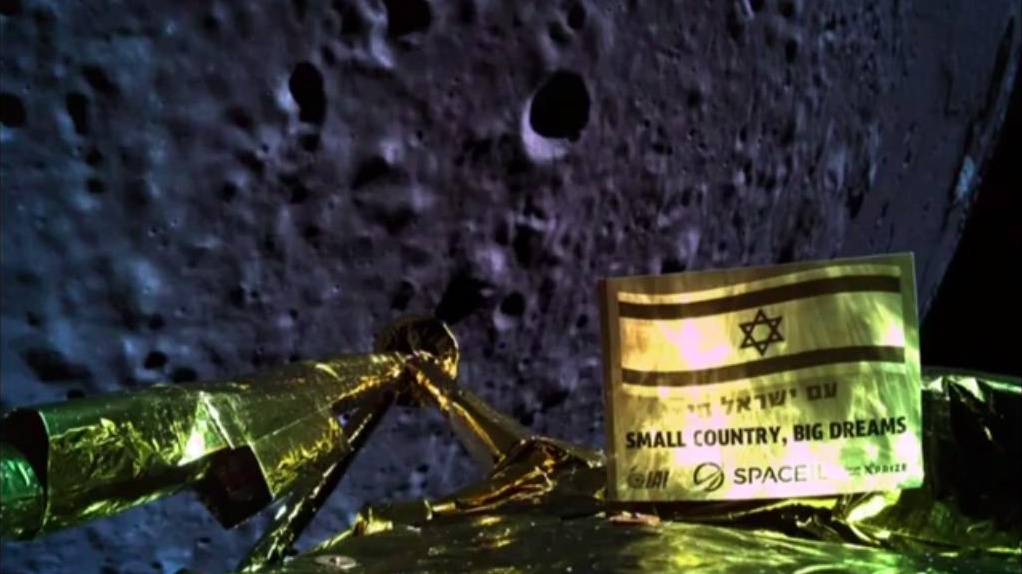Israeli Moon Lander Suffered Engine Glitch Before Crash
Beresheet couldn't slow down in time to avoid a crash.

Beresheet, the Israeli spacecraft that crashed into the moon during a landing attempt yesterday (April 11), was having problems with its main engine during its descent that left it unable to slow down in time before it smashed into the lunar surface.
"A technical glitch in one of Beresheet's components triggered the chain of events yesterday that caused the main engine of the spacecraft to malfunction," engineers with SpaceIL and Israel Aerospace Industries (IAI), the teams that built and operated the spacecraft, said in a statement today (April 12).
Engineers at the mission control center in Yehud, Israel, did manage to restart the engine before the crash, but "by that time, its velocity was too high to slow down and the landing could not be completed as planned," SpaceIL officials said in the statement.
Related: Israel's 1st Moon Lander: The SpaceIL Beresheet Lunar Mission in Pictures
The engine problems started when Beresheet was about 8.7 miles (14 kilometers) from the surface of the moon. Beresheet beamed back one last photo of the lunar surface before it lost communication with Earth and slammed into the lunar soil. The final image arrived at SpaceIL's mission control room when Beresheet was 4.7 miles (7.5 kilometers) above the surface of the moon.
Mission controllers lost contact with the spacecraft when it was at an altitude of 492 feet (150 meters) and barreling downward at a speed of 310 mph (500 km/h). "We seem to have a problem with our main engine," SpaceIL's commentator said during a live webcast of the landing operations. "We are resetting the spacecraft to try to enable the engine." A few seconds later, he announced that the main engine was back on — but it was already too late.

Israel may not have succeeded in a soft landing on the moon, but the tiny country is not giving up on its lunar ambitions just yet. Israeli Prime Minister Benjamin Netanyahu, who watched the landing attempt from the mission control room, said Israel will try to land on the moon again in the next two to three years.
Breaking space news, the latest updates on rocket launches, skywatching events and more!
- Israeli Lander Failure Marks 1st Moon Crash in 48 Years
- Here's What Mission Control Is Like Before Israel's Beresheet Moon Landing
- Israeli Moon Lander Snaps Epic Space Selfie with a Full Earth
Email Hanneke Weitering at hweitering@space.com or follow her @hannekescience. Follow us on Twitter @Spacedotcom and on Facebook.

Hanneke Weitering is a multimedia journalist in the Pacific Northwest reporting on the future of aviation at FutureFlight.aero and Aviation International News and was previously the Editor for Spaceflight and Astronomy news here at Space.com. As an editor with over 10 years of experience in science journalism she has previously written for Scholastic Classroom Magazines, MedPage Today and The Joint Institute for Computational Sciences at Oak Ridge National Laboratory. After studying physics at the University of Tennessee in her hometown of Knoxville, she earned her graduate degree in Science, Health and Environmental Reporting (SHERP) from New York University. Hanneke joined the Space.com team in 2016 as a staff writer and producer, covering topics including spaceflight and astronomy. She currently lives in Seattle, home of the Space Needle, with her cat and two snakes. In her spare time, Hanneke enjoys exploring the Rocky Mountains, basking in nature and looking for dark skies to gaze at the cosmos.
